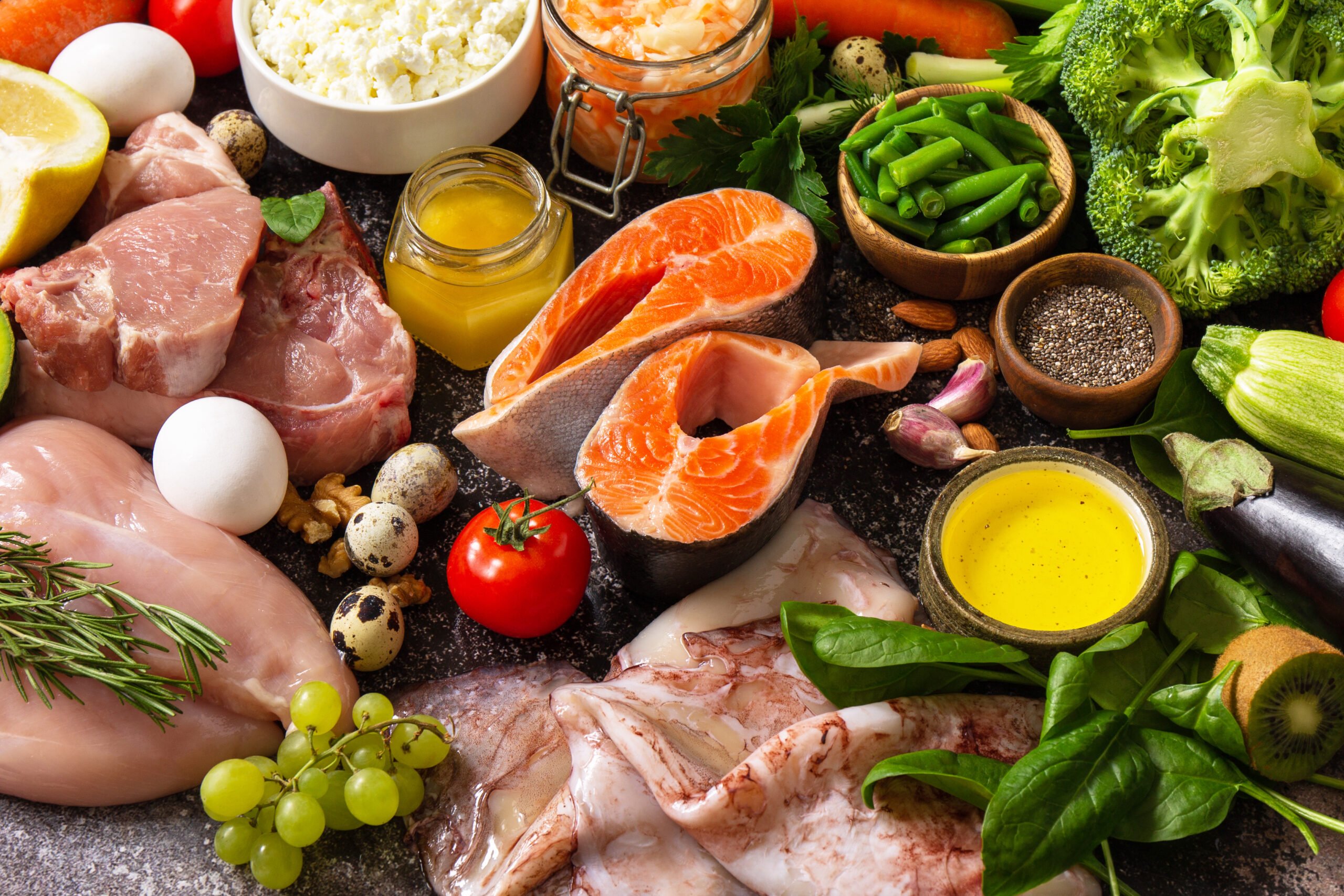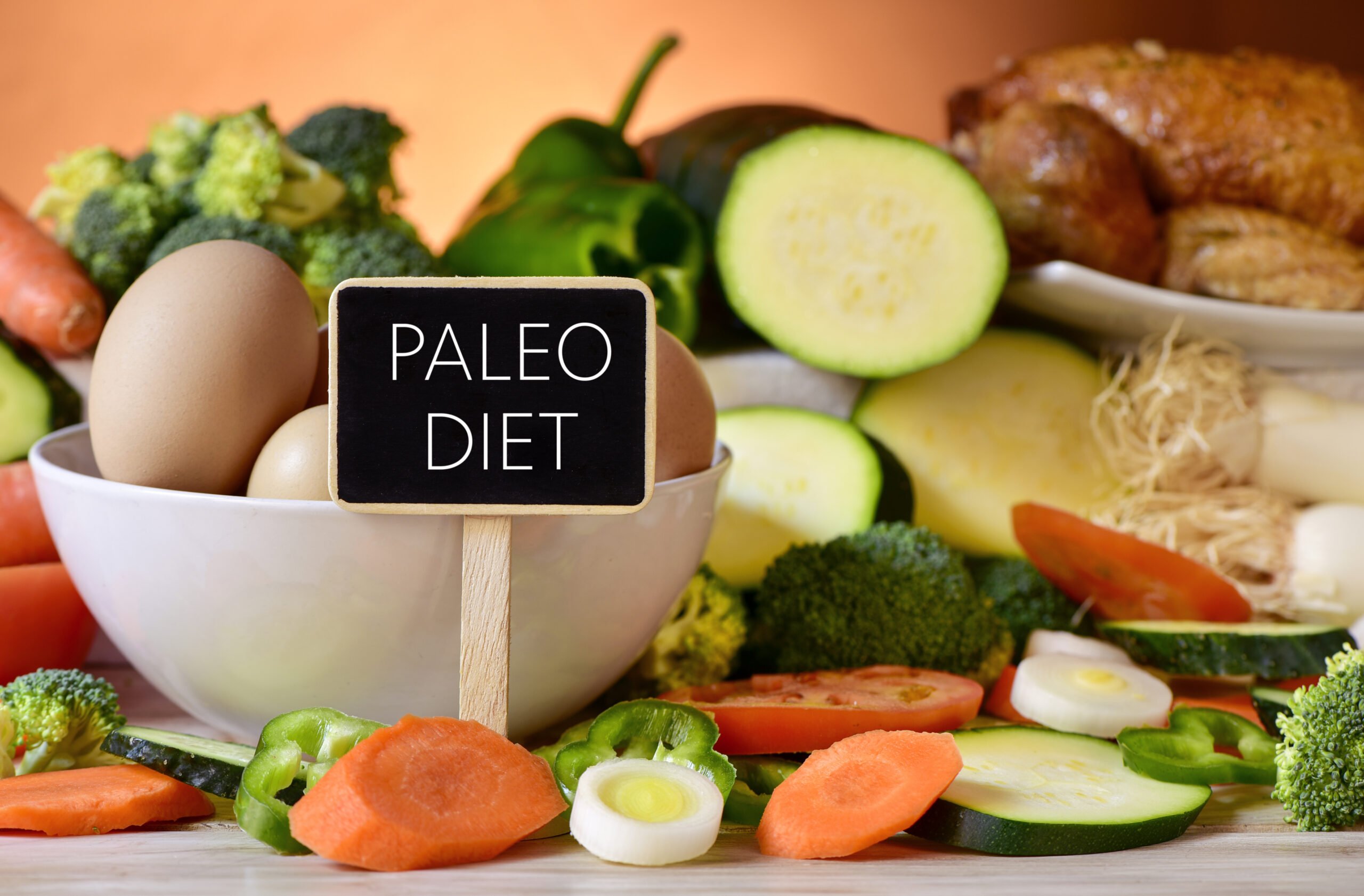If you want to make some changes to your eating habits, but don’t know where to start, it can feel natural to want to try a new diet plan. There are so many popular ones to choose from, but knowing how to pick the right one for your goals and lifestyle can be tricky. Instead of going over every single option you have, I want to focus on one of my favorite diets—the paleo diet.
What Is The Paleo Diet?
There are so many conflicting opinions on what the paleo diet is, how you should go about it, and more. To me, it’s fairly simple and you are free to interpret any diet plan in a way that works for you. In short, the paleo diet consists of whole, unprocessed foods that could have been eaten by humans in Paleolithic times, also known as the Old Stone Age. Essentially anything that was accessible before commercial agriculture and modern food processing practices.

It can be difficult to think about all of the foods available during this time, so here’s a quick list of what most people consider to be a true paleo diet:
- Whole meats (muscle meats, organs, bones—no processed meats like cold cuts or hot dogs)
- Fish and seafood
- Fresh fruit
- Fresh vegetables
- Eggs
- Nuts (excluding peanuts, which is considered a legume)
- Seeds
- Unprocessed oils (ex: olive, flaxseed, avocado, coconut—no canola or vegetable oils)
- Unrefined sugar in moderation (ex: raw honey and 100% maple syrup)

While this may seem like an easy diet to follow, notice that there aren’t many options for carbs other than starchy carbs, like potatoes. Carbs like rice and quinoa are excluded from this list as some people consider them processed forms of their original grain. Also, for any of my sauce loving girlies out there, there isn’t much room to create sauces on the paleo diet other than variations of cheeseless pesto. Yes! No cheese either, as it’s a processed form of milk. There’s also debate on whether cavemen drank milk.
As you can see, there’s a lot of room for interpretation on this particular weight loss diet. In my opinion, I think it sets a great foundation to build upon. If I were to follow a paleo plan, this is what a general day of eating would likely look like for me:
- Breakfast: chicken breast, blueberries, walnuts, and yogurt (compliant except for yogurt)
- Lunch: Honey grilled salmon with onions, peppers, and avocado (compliant)
- Dinner: Steak, sweet potatoes, and steamed broccoli (compliant)
- Dessert: Dark chocolate or coconut ice cream (not compliant)
Could I leave out the yogurt and dessert? Absolutely. My argument would be what is your goal? Is your goal to strictly follow the paleo diet, or is it to create healthy, sustainable eating habits that support your goals and lifestyle? For me, it will always be the latter. Keep that question in mind whenever you try a new diet or meal plan. 🙂

Can It Help Me Lose Weight?
One of the main draws of the paleo diet is it’s meant to help you drop weight and build muscle, if exercising alongside it. The low-carb, low-sugar, unprocessed foods focus of this diet is guaranteed to help you shed a few pounds. Not only do refined sugars and oils slow metabolism, but they can also contribute to fat gain. Your metabolism will likely improve with the amount of clean fuel you’ll be providing your body with.
Pros of the Paleo Diet
One of my favorite things about the paleo diet is that it’s a very clean way of eating—minimal sugar, zero processed food, and low in fatty carbohydrates. This is a really great foundation for anyone that wants to improve their physique, energy, skin, and sleep. I believe when followed within reason, this diet is a great way to drop pounds and tone up alongside a good workout routine.
Another great reason to try the paleo diet is that it’s super easy to eat paleo no matter where you are. When at a restaurant, you can simply order a steak and vegetables, and for breakfast you can have eggs and fruit. There are so many diets that make you feel like you can’t leave your house for a single meal, but paleo makes it very easy to modify dishes.
Cons of the Paleo Diet
Something that can get tricky about the paleo diet is you can start to feel restricted. I’m not a big fan of cutting out food groups or certain items, and the paleo diet does limit your options. If you have a history of eating disorders, I would not recommend this meal plan. However, if you go into it with some wiggle room and an open mind, I think you can easily make it work for you.

Things to Consider
- Anyone that’s vegan or vegetarian will not thrive on a paleo diet as it relies heavily on protein as your main source of fuel.
- If you have a major sweet tooth, you may want to ease into it as it only includes fruit and natural sugar sources.
- Are you someone that tends to be hard on themselves? I think this diet works well if you’re comfortable with not following the rules to a T. Otherwise, it can be very taxing emotionally and physically, especially if you’re not used to eating this way.
- Is it sustainable? If you eat a lot of processed foods, quitting cold turkey can be a recipe for disaster. Try easing into the diet, or see if another meal plan aligns better with your lifestyle.
- Do you know anyone else that’s interested in trying it with you? The buddy system is a great way to be successful at anything!